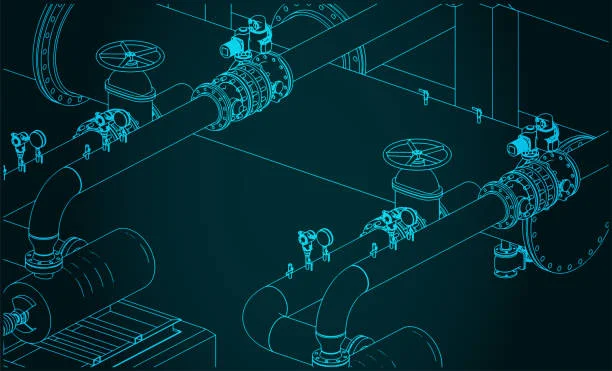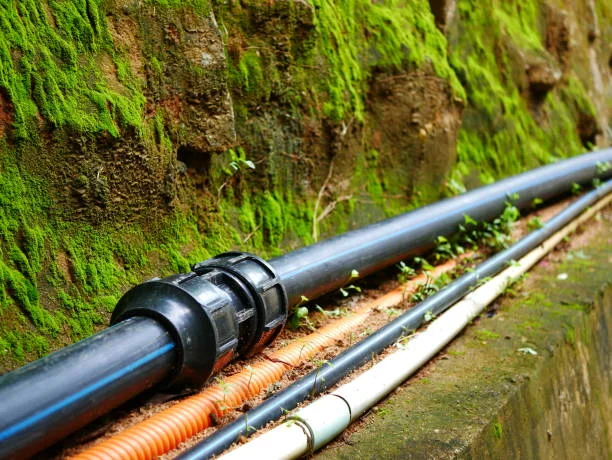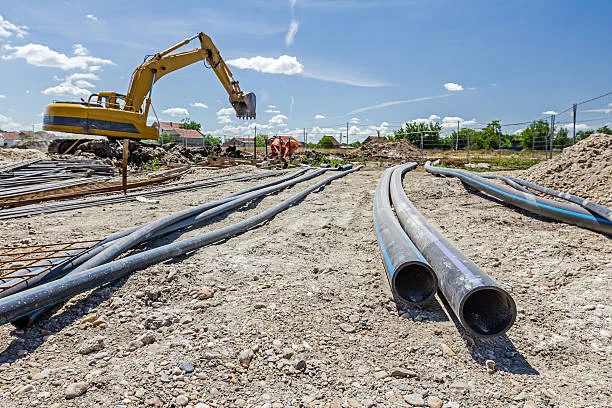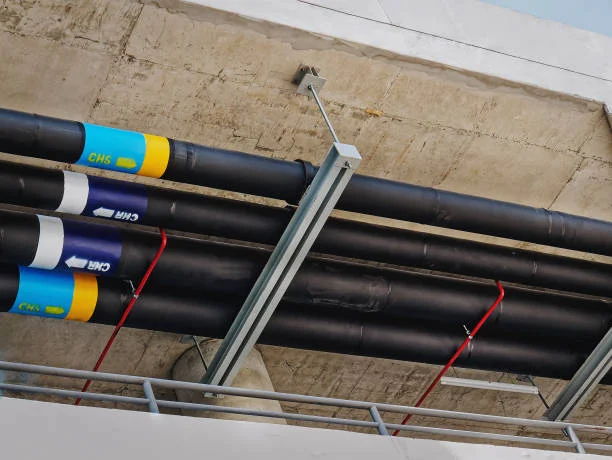High-Density Polyethylene (HDPE) pipes are revolutionizing various industries with innovative applications beyond traditional uses. From reinforcing infrastructure and promoting eco-friendly construction to enhancing precision in agriculture and safeguarding utilities, HDPE pipes offer durability, flexibility, and environmental benefits. Their transformative potential extends to health, art, transportation, and future technologies, showcasing their pivotal role in shaping a sustainable and progressive world.
Unlocking the Potential: 5 Innovative Uses of HDPE Pipe
Introduction Of 5 Innovative Uses of HDPE Pipe
In today’s dynamic industrial landscape, High-Density Polyethylene (HDPE) pipe stands as a testament to innovation and adaptability. Traditionally, HDPE pipes have been synonymous with conventional applications like water supply and sewage systems. However, the horizon of possibilities has broadened, unveiling revolutionary uses that are reshaping industries worldwide. Let’s embark on a journey to uncover five groundbreaking applications where HDPE pipes are leading the charge toward progress.

1. Reinventing Infrastructure:
Underneath our bustling cities lie intricate networks of subterranean water management systems. HDPE pipes have emerged as the backbone of these systems, offering unparalleled durability and corrosion resistance. Moreover, in urban environments where space is limited, innovative drainage solutions utilizing HDPE pipes alleviate flooding concerns and preserve the integrity of infrastructure.
2. Eco-Friendly Construction:
The construction industry is embracing sustainability, and HDPE pipes are at the forefront of this movement. From sustainable building materials to green roof irrigation systems, HDPE pipes are enabling environmentally conscious construction practices without compromising performance or longevity.
3. Advancements in Agriculture:
Precision is paramount in modern agriculture, and HDPE pipes are facilitating precision irrigation techniques that optimize water usage and enhance crop yields. Additionally, agricultural drainage solutions employing HDPE pipes are mitigating soil erosion and promoting soil health, contributing to sustainable farming practices.
4. Revolutionizing Utilities:
In the realm of utilities, HDPE pipes are revolutionizing underground cable protection and gas distribution networks. Their flexibility and resistance to corrosion make them ideal for safeguarding critical infrastructure and ensuring uninterrupted service delivery to communities.
5. Aquatic Applications:
From marine pipeline systems to offshore oil rig infrastructure, HDPE pipes are making waves in aquatic applications. Their resistance to saltwater corrosion and ability to withstand harsh marine environments make them indispensable in offshore operations, where reliability is paramount.

6. Innovative Industrial Uses:
In industrial settings, HDPE pipes facilitate the safe transport of chemicals and industrial waste. Chemical processing pipelines and industrial waste management systems constructed with HDPE pipes offer enhanced durability and corrosion resistance, minimizing the risk of environmental contamination.
7. Health and Safety Applications:
The healthcare industry relies on HDPE pipes for critical applications such as medical gas distribution systems and fire suppression. Their inert nature and leak-proof design ensure the safe and efficient delivery of medical gases, while their resilience under high temperatures makes them ideal for fire suppression systems.
8. Transportation and Logistics:
In the realm of transportation and logistics, HDPE pipes provide flexible solutions for pipeline transportation and material handling. Whether it’s transporting fluids or conveying bulk materials, the lightweight and durable nature of HDPE pipes makes them an ideal choice for various logistical challenges.
9. Creative Art Installations:
Beyond their utilitarian applications, Uses of HDPE Pipe are inspiring creative expression in the realm of art and design. Public art projects utilizing HDPE pipes as sculptural elements are redefining urban spaces and fostering community engagement through innovative artistic expression.
10. Exploring Futuristic Possibilities:
As we look towards the future, the potential applications of HDPE pipes are limitless. From 3D printing with Uses of HDPE Pipe materials to integrating them into smart city infrastructure, the possibilities for innovation are boundless. By embracing experimentation and collaboration, we can unlock new frontiers in technology and design.
In conclusion, the transformative potential of HDPE pipes spans across a myriad of industries, from infrastructure and construction to healthcare and art. As we continue to push the boundaries of innovation, HDPE pipes will undoubtedly remain at the forefront of progress, shaping the world we live in and paving the way for a brighter, more sustainable future. Let us embark on this journey of exploration and discovery, where the only limit is our imagination.

As the blog illustrates the transformative potential of HDPE pipes across various industries, from infrastructure to art and futuristic technologies, our premium HDPE pipes stand ready to contribute to your innovative projects, ensuring durability, reliability, and environmental sustainability.
FAQs for “Unlocking the Potential: 5 Innovative Uses of HDPE Pipe”
1. What is an HDPE pipe?
HDPE stands for High-Density Polyethylene. It is a type of thermoplastic pipe known for its durability, flexibility, and resistance to corrosion.
2. What are the traditional uses of HDPE pipe?
Traditionally, HDPE pipes have been used in applications such as water supply, sewage systems, and gas distribution networks.
3. What makes HDPE pipes suitable for innovative applications?
HDPE pipes offer a unique combination of flexibility, durability, and resistance to environmental factors and chemicals, making them ideal for innovative uses across various industries.
4. How are HDPE pipes used in infrastructure reinvention?
HDPE pipes are employed in subterranean water management systems and urban drainage solutions to address flooding concerns and preserve infrastructure integrity.
5. What eco-friendly construction practices utilize HDPE pipes?
Sustainable building materials and green roof irrigation systems are examples of eco-friendly construction practices that leverage the versatility of HDPE pipes.
6. How do HDPE pipes contribute to advancements in agriculture?
HDPE pipes enable precision irrigation techniques and agricultural drainage solutions, promoting water efficiency and soil health in modern farming practices.
7. What utilities benefit from the revolutionizing capabilities of HDPE pipes?
Underground cable protection and gas distribution networks rely on HDPE pipes for their flexibility and resistance to corrosion, ensuring reliable service delivery.
8. In what aquatic applications are HDPE pipes making an impact?
HDPE pipes are integral to marine pipeline systems and offshore oil rig infrastructure, where their resilience to saltwater corrosion is essential for offshore operations.
9. What innovative industrial uses are facilitated by HDPE pipes?
Chemical processing pipelines and industrial waste management systems utilize HDPE pipes for their durability and resistance to chemical corrosion.
10. How do HDPE pipes contribute to health and safety applications?
HDPE pipes are used in medical gas distribution systems and fire suppression systems due to their inert nature and leak-proof design, ensuring safe and efficient operations.
These FAQs provide insights into the diverse applications of HDPE pipes, showcasing their versatility and transformative potential across various industries.


